No matter how many times our elders told about the ill-effects of using cell phones while driving, but how many of us have taken their advices seriously. But whether we like it or not, it is one of the major reasons for number of accident that are happening nowadays. Even doctors have now recently stated that talking on cell phones while driving is as fatal as driving our car after drinking. It can lead to various disastrous major miss-happenings. Certainly there has been large number of figures that shows that people have used their mobile phones just before their accidents. Studies have shown that if people reduce their usage of cell phone while driving, it can cut off the accident rates too. So next time if your cell rings, make sure to answer your phone call only after when you reach your destination and not in-between the way. In this a concept Proposed to overcome this, it consists of two devices former the vehicle section once we start the ignition the RF signal transfer’s from the vehicle to mobile immediately it changes to Driving mode. If mobile receives the call, it attends and gives the voice information, if the call is emergency only means it will inform the driver through ringing.If a driver once attend the call them the speed of the vehicle will be decreased. In order to increase the Speed of Vehicle driver must end the call.
Keywords |
| Driving mode, vehicle section, mobile section, Emergency call |
INTRODUCTION |
| In this a concept proposed an adaptive hands free technique for mobile communication systems. It consists of two
devices former the vehicle section once start the ignition the RF signal transfer’s from the vehicle to mobile
immediately it changes to Driving mode. If mobile receives the call, it attends and gives the voice information, if the
call is emergency only means it will inform the driver through ringing. |
| GSM Modem is interfaced with the microcontroller through RS232 converter. RS 232 converter is used to convert
any logic to TTL logic vice versa because GPS receiver is the RS232 logic and microcontroller is the TTL logic. Here
the microcontroller is the flash type reprogrammable microcontroller in which we have already programmed. Then
dialing information signal is transmitted through GSM network or mobile. |
| One of the major reasons for number of accident that are happened by using mobile phones while driving. It hardly
matters whether the person makes use of hands free or hand-held phones, there’s no escape to it. This deadly combo
has significantly increased the risk of accidents in large numbers. To overcome these situations we are introducing a
hands free technique.For all the process we are using two domains the first one is the embedded system for assigning
the task. The later is wireless communication for the transfer of data. |
| Mobile phone use while driving is common but controversial. Being distracted while operating a motor vehicle has
been shown to increase the risk of accident. Certainly there has been large number of figures that shows that people
have used their mobile phones just before their accidents. Studies have shown that if people reduce their usage of cell
phone while driving, it can cut off the accident rates too. So next time if your cell rings, make sure to answer your
phone call only after when you reach your destination and not in-between the way. |
| Schmidt in [4] presented the challenges of adopting middleware approaches to develop real-time and embedded
systems. Gill et al. in [5] presented a number of middleware specific optimizations for a target application, using a
flexible middleware scheduling framework. Andreas Gal et al. in [6] proposed the use of aspect-orientation in real-time
systems for distribution, timeliness and dependability domains. Middleware configurability and customization is an
active research area. It is addressed from two approaches. One is a dynamic approach, in which the middleware is
capable of adapting to the dynamics of the system by reconfiguring itself during runtime [7]. The other is a static
approach, which focus on highly customizable middleware architectures [2, 8] capable of fulfilling the requirements of
different distributed applications. In addition, using aspect mining techniques, Zhang and Jacobsen [9] have quantified
the crosscutting nature of several CORBA services, including collocation and other features such as portable
interceptors, dynamic programming invocations, and asynchronous calls. Some tools facilitate the customization of
real-time and embedded systems. VEST [10] provides an environment for constructing and analyzing component-based
distributed real-time embedded systems. CoSMIC [11] is a modeldriven development tool suite for configuring and
deploying distributed real-time embedded systems using QoS-enabled component middleware. ZEN-kit [12] supports
the easy customization of the ORB. It provides a hierarchical view of RTZen features that allows developers to handle
the inherent middleware complexity. Sun et al. in [13] described a mapping between COMET and UML-RT that
effectively maps COMET objects and models into UML-RT prototypes and software structures. Based on the mapping
relationship, presented a new software process that derives from COMET to address the issues of designing complex
real-time and embedded systems specifically for UML-RT. |
SYSTEM ANALYSIS |
| A. EXISTING SYSTEM |
| In this section explains the system which is existing in now a day. The following methods contribute to make a
mobile as in silent mode. |
| 1. Muting Mobile. |
| 2. Voice Mail Converter |
| Even though the cell phones while driving puts a driver at a significantly higher risk of collision by distracting his
or her mind. This deadly combo has significantly increased the risk of accidents in large numbers. The problem in the
existing project is the person who is in driving meet with an accident by using mobile phones on the road traffic. Even
though they are aware of results which are happening by using mobile phones, they are not ready to give ear-piece to
avoid such an incidents. So we are trying to control and prevent this case by automatically in embedded applications. |
| B. PROPOSED SYSTEM |
| In this section the Mobile receives the call, it attends and gives the voice information, if the call is emergency only
means it will inform the driver through ringing. The following aspects are proposed for these techniques. |
| 1. Automatic attends of the call. |
| 2. Gives information about the Driver. |
| 3. Only Emergency Call will connect to the User. |
| In our project two sections are used. The first one is mobile section which controls the incoming call to the person
who is in driving. The second one is vehicle section which controls the ignition starter after attending the call by driver.
It rapidly decreases the speed of the vehicle and stops the vehicle at last. |
| Here the Figure 5.1 represents the Block diagram of dash board section. In this the process verification unit is
nothing but the microcontroller unit. The transmitter/receiver section indicates the RS 232. If the transmitter receives
the signal from the microcontroller unit means immediately it will sends the signal to mobile and it will changes the
mobile as in driving mode. |
| This process begins when the vehicle is start. Normally the ignition starter will control the speed of the vehicle. Due
to this concern the control of the mobile unit takes place by ignition starter. |
| C.MICROCONTROLLER (PIC16F877A) |
| It is one of the microcontrollers in PIC family. Normally PIC16F873A/876A devices are available only in 28-
pin packages, while PIC16F874A/877A devices are available in 40-pin and 44-pin packages. |
| The PIC16F877A features 256 bytes of EEPROM data memory, self programming, an ICD, 2 Comparators, 8
channels of 10-bit Analog-to-Digital (A/D) converter, 2 capture/compare/PWM functions, the synchronous serial
port can be configured as either 3-wire Serial Peripheral Interface (SPI) or the 2-wire Inter- Integrated Circuit
(I2C) bus and a Universal Asynchronous Receiver Transmitter (USART). |
| D. BLOCK DIAGRAM |
| 1) Dash Board Section |
| The Dash board section consist of Power supply, Encoder and decoder unir, Transmitter and receiver section,
Process verification unit, Driver select unit and finll Lock/Unlock Division which is shoen in Fig1. |
| 2) Mobile Gadget |
| The former section Consists of Ignition Starter, the microcontroller gives the signal to the mobile. When the signal
is received by the mobile it immediately changes in to Driving Mode. From the Fig.2 indicates the Block diagram of
mobile gadget section. In driving mode, if someone is calling it automatically attends the call and gives response only
for the emergency call. If mobile receives the call, it attends and gives the voice information, if the call is emergency
only means it will inform the driver through ringing. |
| GSM Modem is interfaced with the microcontroller through RS232 converter. RS 232 converter is used to convert
any logic to TTL logic vice versa because GPS receiver is the RS232 logic and microcontroller is the TTL logic. |
| Here the microcontroller is the flash type reprogrammable microcontroller in which we have already
programmed. Then dialing information signal is transmitted through GSM network or mobile.An adaptive hands
free technique mainly applicable for Mobile with vehicle applications like car, bus, trucks etc. And also it gives
the idea to all mobile communication sectors that are providing the GSM/GPRS systems. |
| Here we use a microcontroller from PIC family which is PIC16F877A. Because The PIC16F87XA devices
have a 13-bit program counter capable of addressing an 8K word x 14 bit program memory space. Instead of
serial communication we use MAX 232. The MAX232 is a dual driver/receiver that includes a capacitive voltage
generator to supply TIA/EIA-232-F voltage levels from a single 5-V supply. |
| E. SOFTWARE TOOLS |
| 1) MPLAB IDE: |
| This is the software used to transmit the signal between mobile and vehicle section. MPLAB
Integrated Development Environment (IDE) is a comprehensive editor, project manager and design desktop
for application development of embedded designs using Microchip PIC micro and DS PIC microcontrollers. |
| 2) EMBEDDED C: |
| It is the application software used to make a voice alert in mobile communication unit. |
| 3) PICKIT2: |
| It is the software used to control and monitor the process of PIC microcontroller. |
| 4) ORCAD: |
| It is the software use to design the schematic diagrams which are used in mobile gadget section and
vehicle ignition section. ORCAD Capture is a complete solution for design creation, management, and reuse.
Its ease-of-use allows designers to focus their creativity on design development rather than tool operation. The
hierarchical Schematic Page Editor combines a windows user interface with functionality and features
specifically for design entry tasks and for publishing design data. |
SIMULATION AND RESULT |
| In this project Consist of two sections as mentioned earlier. The mobile section is tested and implemented by using
Kiel ID μ-3 software which is executed by Embedded C language. The snapshot of mobile section and vehicle section
is shown in Figure 3 and Figure 4 respectively. |
| Here, the implementation of mobile section is successfully executed with the help of Kiel ID μ-3
software. As we expected it will give the information about the person who is in driving. The result shown that
“person is in driving” is the command given by voice module to the caller. In case of emergency the caller will try
once again and it will connect to user and the vehicle will rapidly slow down. The number will be displayed in
LCD Display That is shown in Fig 5. |
| The Figure 6 shows that the result of mobile section which undergoes testing and implementing.
Similarly, vehicle section is also implemented and burn within the chip itself. It can be verified during the time of
hardware implementing period. |
| The vehicle section is tested and implemented by using MP Lab IDE software which is executed by Embedded C
language That is shown in Fig 6. |
| |
Figures at a glance |
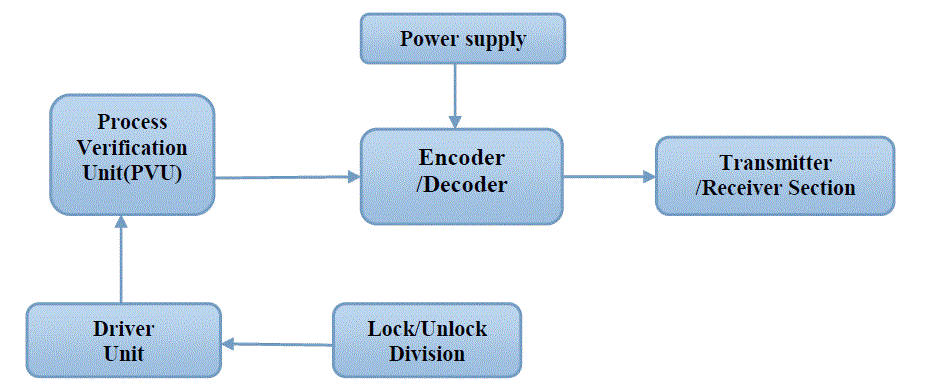 |
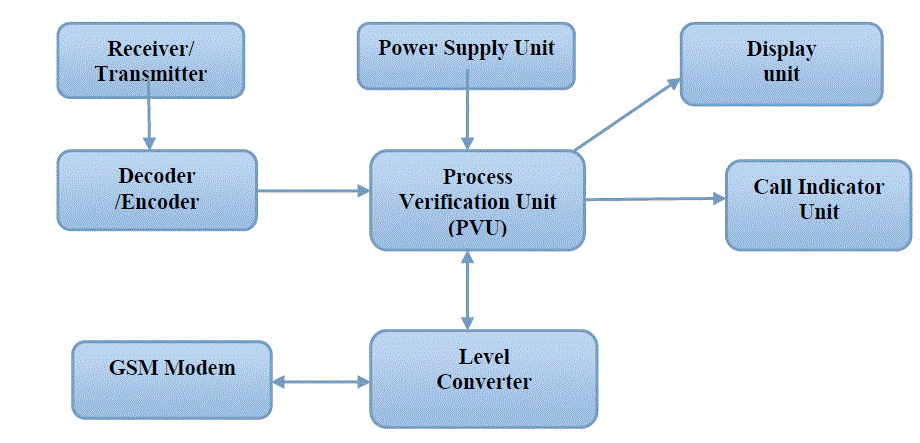 |
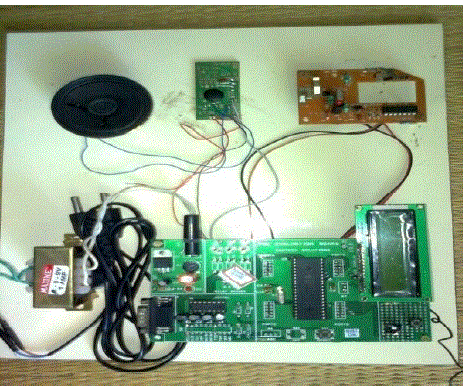 |
| Figure 1 |
Figure 2 |
Figure 3 |
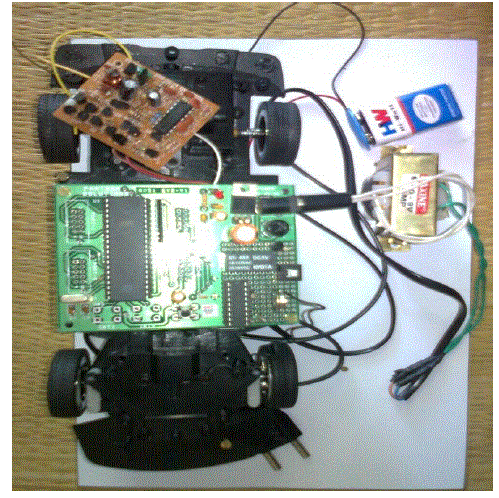 |
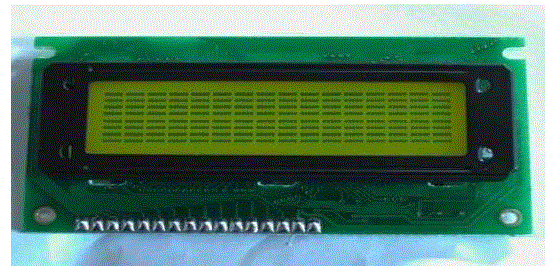 |
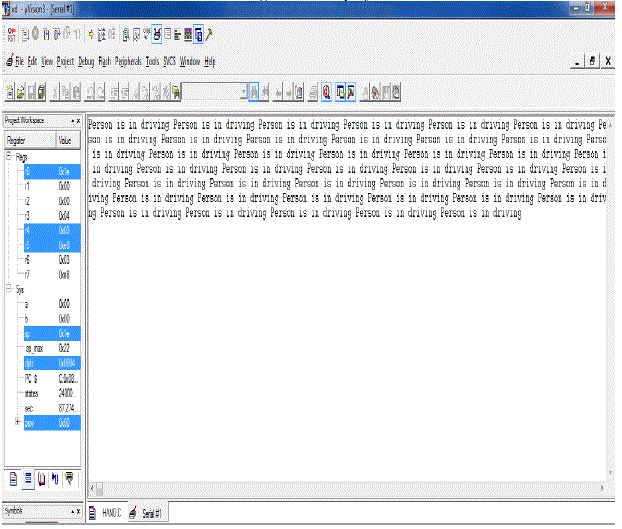 |
| Figure 4 |
Figure 5 |
Figure 6 |
|
| |
References |
- AS. Taylor and R. Harper, "Age-old practices in the 'new world': a study of gift-giving between teenage mobile phone users", Proc. The SIGCHI Conference on Human Factors in Computing Systems: [21] P. Bertels, M. D'Haene, T. Degryse and D. Stroobandt, "Teaching skills and concepts forembedded systems design", SIGBED Rev., vol. 6, no. 1, Jan. 2009, pp. 1-8, doi: 10.114511534480.1534484. Changing Our World, Changing Ourselves CHI 02), Apr. 2002, pp.439-446, doi: 10.11451503376.503455.
- C.Zhang, H.A.Jacobsen, “Quantifying Aspects in Middleware Platforms”, Proceedings of the 2nd International Conference on Aspect-Oriented Software Development, ACM Press, March 2003, pp.130-139,doi:10.1145/643603.643617.
- V. Issarny, M. Caporuscio, and N. Georgantas, “A Perspective on the Future of Middleware-based Software Engineering”, International Conference on Software Engineering archive 2007 Future of Software Engineering , IEEE Press, 2007, pp.244-258, doi:10.1109/ FOSE. 2007.2.
- D. C. Schmidt, A. Gokhale, and R. E. Schantz, et al., “Middleware R&D Challenges for Distributed Real-time and Embedded Systems”, ACM SIGBED Review, vol. 1 ,April.2004, pp.6-12, doi:10.1145/ 1121554.1121556.
- C. Gill, R. Cytron, and D.C. Schmidt, “Middleware Scheduling Optimization Techniques for Distributed Real-Time and Embedded Systems”, Proceedings of the Seventh International Workshop on Object-Oriented Real-Time Dependable Systems, IEEE Press, Jan. 2002,pp.311-318,doi:10.1109/WORDS. 2002. 1000068.
- A. Gal, O. Spinczyk , and W. Preikschat,"On Aspect-Orientation in Distributed Real-time Dependable Systems". Proceedings of the Seventh International Workshop on Object-Oriented Real-Time Dependable Systems,IEEE Press, Jan. 2002, pp. 261-267,doi:10.1109/WORDS.2002.1000061.
- N. Parlavantzas , G. Coulson,"Designing and constructing modifiable middleware using component frameworks", IET Software, vol.1, Aug.2007, pp. 113–126, doi:10.1049/iet-sen:20060050
- C. Zhang, G. Gao, and H.A. Jacobsen, “Towards just-in-time middleware architectures ”. Proceedings of the Fourth international conference on Aspect-oriented software development, ACM Press, Mar. 2005,pp.63-74, doi:10.1145/1052898.1052904.
- C. Zhang, H.A. Jacobsen, "Refactoring middleware with aspects". IEEE Transactions Parallel and Distributed Systems , vol. 14, Nov. 2003 ,pp.1058 -1073,doi:10.1109/TPDS.2003.1247668.
- J.A. Stankovic, R. Zhu,and R. Poornalingam, et al., "VEST: An aspect-based composition tool for real-time systems", Proceedings of 9th IEEE Real-Time and Embedded Technology and Applications Symposium,IEEEPress,May 2003,pp.58-69,doi:10.1109/ RTTAS. 2003. 1203037.
- A. Gokhale, K. Balasubramanian, and T. Lu, "CoSMIC:addressing crosscutting deployment and configuration concerns of distributed real-time and embedded systems", Conference on Object Oriented Programming Systems Languages and Applications, ACM Press, 2004,pp.218-219, doi:10.1145/1028664.1028758.
- Gorappa, S.Colmenares, and J.A.Jafarpour, et al.,"Tool-based Configuration of Real-time CORBA Middleware for Embedded Systems",EighthIEEE International Symposium on Object-Oriented Real-Time Distributed Computing, IEEE Press, May 2005,pp.342-349,doi:10.1109/ISORC.2005.60.
- Y.F. Sun, D. Levy,"A Software Process for Modeling Complex Systems with UML-RT", First Joint IEEE/IFIP Symposium on Theoretical Aspects of Software Engineering, IEEE Press, June 2007,pp.401 - 410,doi:10.1109/TASE.2007.6.
- W. Emmerich, “Software Engineering and Middleware: A Roadmap”, Proceedings of the Conference on The Future of Software Engineering ,ACM Press, 2000, pp.117-129, doi:10.1145/336512. 336542.
- T. Aleksandra ,N. Dag ,and H. Jorgen, et al.,“Aspects and Components in Real-Time System Development: Towards Reconfigurable and Reusable Sofftware”,Journal of Embedded Computing, IOS Press, vol.1, Jan. 2005,pp.17-37.
- E.P. Freitas, M.A. Wehrmeister, C.E. Pereira, and et al., “Using Aspect-Oriented Concepts In The Requirements Analysis Of Distributed RealtimeEmbedded Systems”, Proceedings of IFIP International Embedded Systems Symposium, Springer Boston Press, May 2007, pp.221-230,doi:10.1007/978-0-387-72258-0.
- L. Lavazza, G. Quaroni,M. Venturelli, "Combining UML and formal notations for modelling real-time systems" ,ACM SIGSOFT Software Engineering Notes,vol. 26, Sep. 2001,pp.196-206, doi:10.1145/ 503271.503236.
- R.M.Parizi, A.A.Ghani,"A Survey on Aspect-Oriented Testing Approaches",International Conference on Computational Science and its Applications, IEEE Press,Aug. 2007,pp.78-85, doi:10.1109/ ICCSA. 2007.67. 5348
|